Julia Fullerton-Batten has been working on an ongoing series called “Old Father Thames “…choosing, investigating and photographing a selection of cultural and historical narratives from along its banks.”
For this particular image, she asked us to flood the Tate with water.
“My image captures the aftermath of the flood in the Tate Gallery when a massive wet painting was carried by a group of porters to safety…Miraculously, despite their immersion in muddy Thames water for several hours, only eighteen paintings were damaged beyond repair.”
Here’s a photo of the original event from 1928:
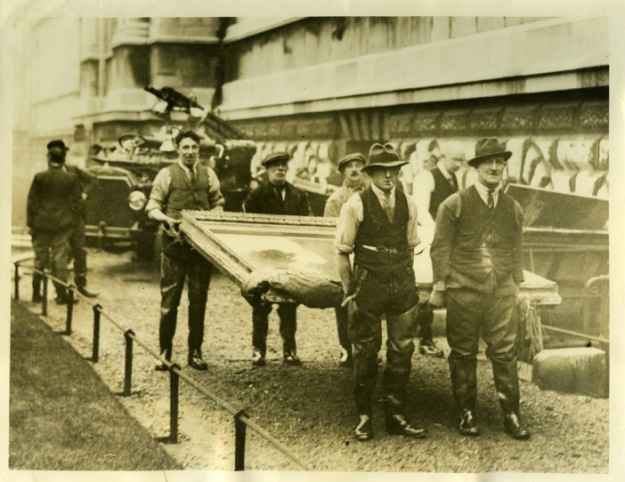
Our retouchers Riikka Eiro and Maria Calosso joined the photographer on set at the Tate Britain (which was only available at night) to see what would need to be done, to absorb the feeling and lighting of the room, and to take the thousands of photos to produce an accurate photoscan. This would be used for the reflections of the water, as a very high level of verisimilitude would be vital to conveying the shock of seeing such an iconic room flooded.
Take a look behind the scenes of the shoot in Julia’s film:
The CGI and retouching had to be worked on simultaneously, as the image had to be composited and graded before the water was added, to allow for accuracy in the reflections and adjustments for the overall look.
We modelled a simplified interior of the room from our photoscans and then camera matched so that the distance and perspective we would use for the water would match the rest of the image as we were compositing. Kristian Turner, head of CGI, worked out the angles within a simplified geometry of the room, and then used that as a camera to project the reflections of this into the water.
Next, we made a basic geometry so that we had the depth in areas where the people intersected with the water. The rest of the bodies were only needed in 2d, for reflections, composited as ‘cards’.
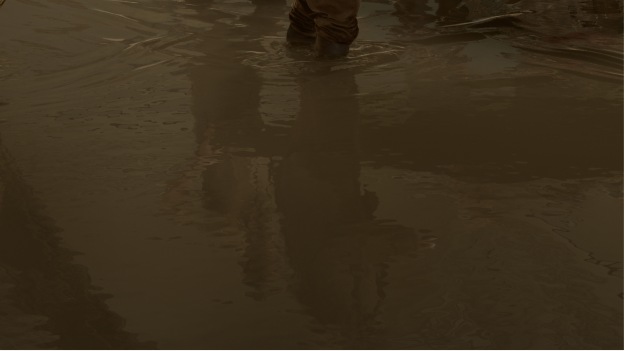
To create the height and pattern of waves created by the people moving in a room, we searched for reference on the internet – news photos of floods were a good source. We looked at the way that water moves inside a building and also at what happens when people interact with the water – how their movement as they slosh around inside a room creates ripples and turbulence. It’s possible to map exactly how this would actually look via simulation – but we needed greater artistic control for the right effect.
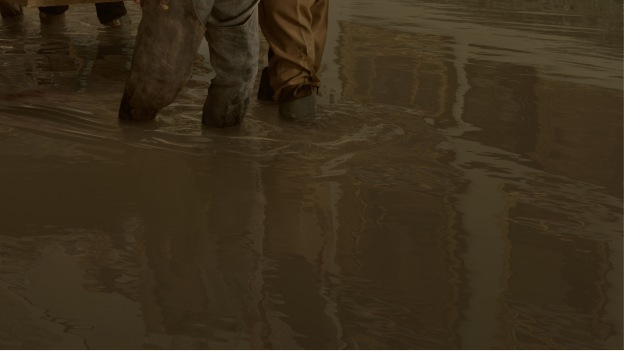
It’s of huge importance to this project as a body of work that the water is believable as being from the Thames. We used volumetric rendering – normally used for mist and smoke – to add opacity in a realistic way, working with reference photos and our own observations of the river. In reality the water would have had much more debris. For the image it was important that it retained a river-water look, and that the parquet floor, so familiar to visitors of the Tate, was visible faintly below the water, distorted by the ripples.
Each person’s interaction with the water was individually mapped, such as the movement of the water around their legs. Wet splashes on their clothes were added with retouching.
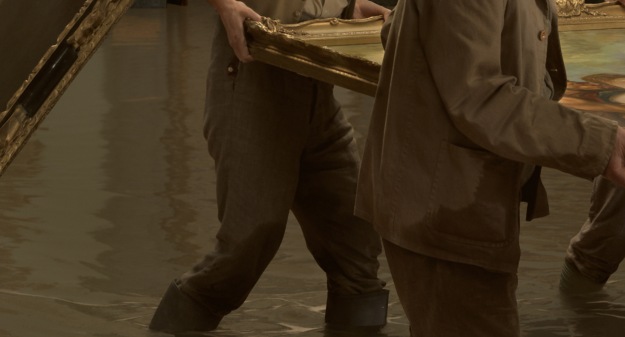
The shoot was actually done at night, so we added daylight to the room. The figures were all shot with a softbox flash, and we softened them further for a painterly feel. With painstaking care, we removed all signs of modernity in the room – light switches, alarms, cables and so on, and carefully fine-tuned the colours in the image to reflect the volume of muddy water in the room.
See how we did it stage by stage here:
Final image here:
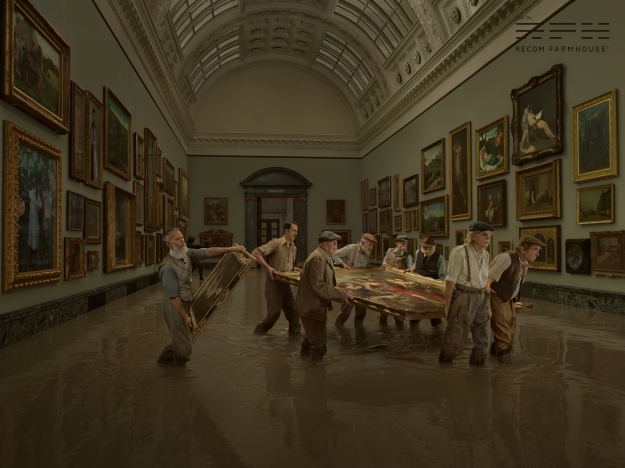
The final, graded image reflects all the hard work…when the Tate posted it on their Twitter feed on a rainy day, people asked if it was a real picture. We’ll take the compliment 🙂
#TateWeather Did you get caught out in the rain this bank holiday? 🌧️
This photo imagines Tate Britain in January 1928 following a flood of the River Thames.
Julia Fullerton-Batten, 1928 Flooding of the Tate Gallery 2018, taken from Old Father Thames series. @FullertonBatten pic.twitter.com/EDbQtvNQUf— Tate (@Tate) May 30, 2018
The project has been featured in many publications including Creative Review, The Eye of Photography and The Association of Photographers , and the series will be shown in Barcelona later this year as part of the 5th Biennale of Fine Art & Documentary Photography.
See it on Behance here
And on Our site here:
Credits:
Photographer: Julia Fullerton-Batten
Photoshoot Team:
Digital Operator: Gideon Marshall
Assistants: Sebastian Niespialowski, Ken Street, Jason Lewis
Work Experience: Matt Darlington, Jo Cock, Jamie Buckle
Models: Alan Byrch, David Newton, Martin Reines, John Lauri, Paul Orchard, Frank Gordon, Peter Charlton, Christophe Philipps
Stylist: Graham Cruz
Post-Production Team
CGI Artist: Kristian Turner / Recom Farmhouse London
Post Artist: Riikka Eiro / Recom Farmhouse London
On-set support: Maria Luisa Calosso & Riikka Eiro / Recom Farmhouse London